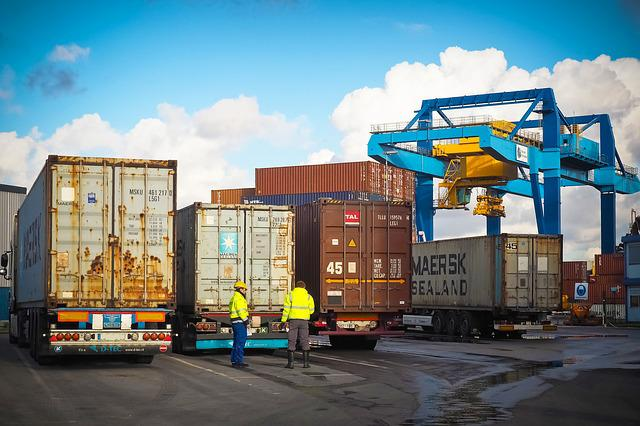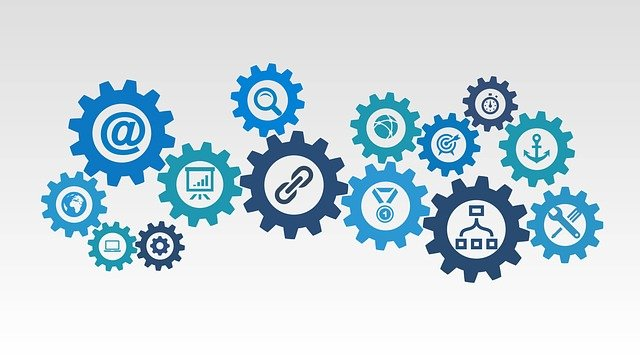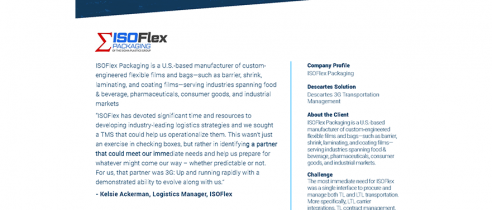Blog
Logistics Resource Management – 3 Tips to Maximize Efficiency

If you’re like most business owners, you’re always looking for ways to increase efficiency and optimize operations. Logistics resource management is a great way to do just that.
When it comes to logistics management, there are a few key things you can do to streamline your process, eliminate waste, reduce costs and make the most of your resources.
In this blog post, we’ll explore what logistics resource management is and how you can use it to optimize your supply chain.
By following these tips, you can improve your bottom line and become more competitive in today’s market.
What is Logistics Resource Management?

Logistics Resource Management is a subset of logistics management that focuses on making sure that internal resources are used efficiently.
This includes areas like:
- Inventory Planning
- Inbound / Outbound Logistics
- Warehousing
- Fleet Management
- Delivery Fulfillment
Logistics resource management aims to minimize waste and maximize efficiency throughout the supply chains.
Logistics Resource Management (LRM) is optimizing your entire supply chain to improve efficiency and reduce costs. Many factors need to be considered when designing a successful LRM strategy.
The multidisciplinary nature of logistics makes resources a core component at all levels. Understanding and addressing it is an essential step toward increasing the efficiency of logistics processes.
Modern and efficient LRM, enabled by technologies such as cloud-based logistics management software, predictive analytics and machine learning, allows businesses to discover new areas of revenue, increase delivery profitability, invest in higher levels of strategic planning, and provide better customer experiences.
Why Logistics Resource Management is Important

LRM is important because it directly contributes to an organization’s success. Studies show that optimizing your logistics transportation can increase revenue and help achieve greater profitability.
In today’s competitive marketplace, businesses need to be efficient in order to survive. With the right LRM strategy in place, companies can save time and money by reducing waste and improving their capital efficiency.
The increasing complexity of the movement of goods has made logistics management critical in keeping up with evolving customer needs, increased competition, and market dynamics.
Logistics management is critical to planning and controlling the flow and storage of goods and services to meet customer demand. Both inbound logistics and outbound logistics are part of the planning process.
Optimized logistics provides clear visibility into transportation activities to ensure smooth supply chain management. For instance, by analyzing transportation data, companies can improve route optimization to avoid disruptions and save on operational and fuel costs.
Effective logistics execution can help businesses improve end customer satisfaction by ensuring that products are delivered to meet customer requirements.
How to Optimize LRM

Customer satisfaction is the end goal of any logistics chain since it impacts your brand image and ability to earn more business. Effective logistics management is the key to success.
To optimize your LRM strategy, you must understand how to use your resources effectively and efficiently.
There are five key tactics you can employ to optimize your logistics strategy, including:
- Analyze your data and company strategy
- Implement contingency planning
- Leverage business automation and software
- Employ just in time (JIT) implementation
- Leverage market research and historical data
Analyze your data and define a strategy
The first step is to analyze your data to understand where you can improve efficiency. This includes looking at things like transportation costs, delivery times, inventory levels, fulfillment, and customer satisfaction levels.
By understanding where your weaknesses are, you can make changes to improve your operations and reduce potential disruptions.
Defining goals for your transportation and logistics operations is the next step. As you are goal setting, you must define measures linked to the overall objectives of the organization.
One way to successfully complete this is by examining every link in your supply chains and planning from that perspective. One potential output from this assessment could be the decision to outsource part of your operations or management controls to a third-party provider to create efficiencies.
Implement contingency planning
A logistics resource management strategy is not complete without a contingency plan. This is essential to have in place in case of any unforeseen problems that may disrupt your supply chain.
Your contingency plan should cover things like supplier disruptions, quality control issues, transportation delays, IT system failures, and natural disasters. Having a plan in place can minimize these events’ impact and keep your operation running smoothly.
Instead of handling significant issues as they arise, try preparing your operations by acting proactively. Contingency plans are helpful in decision-making ahead of time. Having one in place can help you address issues in real-time.
Leverage business automation and software
Business automation is a game-changer for the modern-day supply chain management. It provides businesses with logistics data collection and analysis from multiple sources, perspectives, or applications, allowing more informed decisions about their operations.
There are many business applications and software solutions that can help you to optimize your operations and resource capabilities.
By automating tasks like transportation, order, and warehouse management, you can free up to focus on other areas of your business.
Not only will this improve efficiency, but it will also help to improve accuracy and reduce human error. The next evolution of autonomy will be artificial intelligence. RPA is becoming more critical as companies rely on greater levels of robotic process automation to complete administrative tasks.
Systems that can significantly help you include:
- TMS – Transport Management System
- WMS – Warehouse Management System
- OMS – Order Management System
Transport Management Systems
A TMS provides coordination and management of transportation to move goods from origin to destination. TMS is a comprehensive software that supports companies in managing logistics activities and improving shipping processes. It enables streamlined communication using one platform with real-time updates available.
Warehouse Management System
A WMS provides efficient control over stock levels, inventory movements, and warehouse operations. WMS is software that automates and streamlines warehouse tasks and processes. As a result, it increases accuracy and efficiency while reducing operational costs.
Order Management System
An OMS ensures the timely and accurate processing of customer orders. OMS is software streamlining the order management process by automating tasks, such as order entry, pricing, and invoicing. It also provides visibility into the status of orders, inventory levels, and customer data.
TMS and WMS or OMS are systems that can help you streamline operations and manage your logistics resources effectively.
The best logistics and supply chain planning software can be integrated, bringing huge value and more efficiency to your operations.
JIT implementation
Just-in-time (JIT) implementation can be a very effective way to reduce costs and increase efficiency. JIT is a system in which supplies are only acquired or used as they are needed, rather than being stockpiled.
This can help to reduce waste, as well as the cost of stored materials and excess inventory. In addition, JIT can help to improve communication and coordination between different parts of the supply chain.
Market research and historical data
Looking at the past to help decision making in the future is critical. Different stages of the logistics management process will reveal opportunities to improve your strategic planning. From equipment, to scheduling to customers, there is a no stone left unturned mentality to mining this type of data.
How to measure success?

Resource optimization is incomplete without integrating measurement, output analysis, and feedback.
You need to measure the results when deploying a new strategy or system. This is important as it shows the success or failure of the plan and defines potential areas for further improvement.
LRM software and applications should be able to show you where your company’s strengths and weaknesses are. From warehousing unused products to avoiding last mile delivery hiccups, you’ll find areas to improve.
You need to analyze metrics related to different types of operations, including:
- Cycle time metrics
- Cost metrics
- Service metrics
By tracking and measuring your company’s performance, you can make changes and adjustments to your strategy as needed to improve efficiency and optimize your operations.
Final Thoughts
A company’s logistics management must evolve and adapt to the latest technological innovations to meet rising customer expectations, generate profits, and allow for growth.
Companies must implement the best logistics management practices in-house to enhance operational performance by emphasizing process coordination and information sharing.
Logistics resource management is a critical part of any business. You can stay ahead of the competition by managing your systems better. Companies need to understand and address logistics management because it directly contributes to an organization’s success.
As competition increases and market dynamics evolve, logistics resource management will become even more critical for keeping up with changing customer needs.







